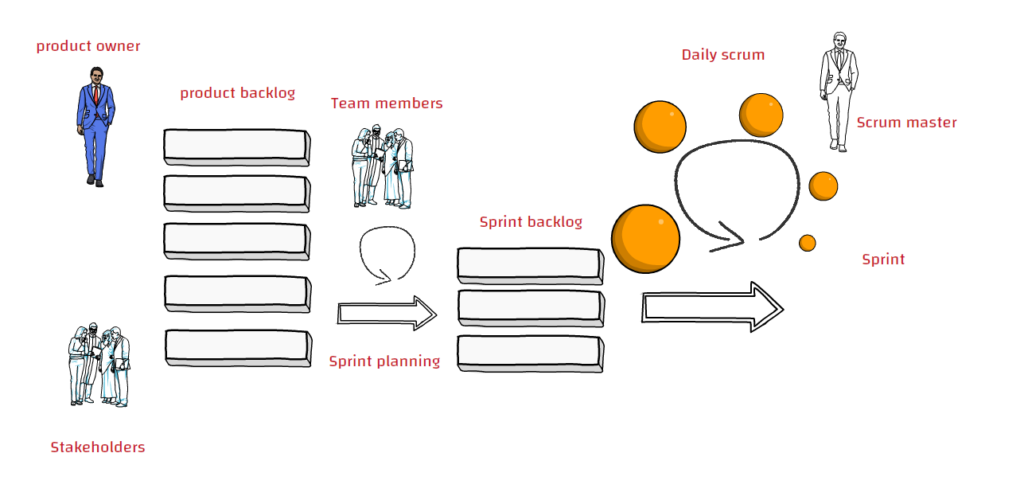Comparison of scrum and Kanban methodologies, which one a good fit for your company
Kanban and scrum are the most used agile method in corporate world. They are usually combined together. This is due to their multiple advantages as for example quick deliveries, easy implementation, adaptability and continuous improvement.
Scrum is based on lean manufacturing.
Kanban is inspired by Toyota Production system and by lean manufacturing
Scrum and Kanban are the most powerful methods used by companies to develop software’s. Their use is expanding to other sectors like real estate projects and machinery industries.
Kanban Methodology
Kanban is an organization system for managing tasks in business processes.
The Kanban facilitates the work by dividing large amount of work in small chunks. These small tasks make easier the execution of the work. Kanban increase productivity, build processes, adjust the workload of employees and meet deadlines. In Kanban work is considered achieved only if all tasks are completed.
Kanban achieve the following:
*Optimise the work
*Control the workflow
*Track the workload of employees
*Visualise the workload of employees
*reduce the work in progress
*Prioritise
*All Team members can see what stage the task is.
Softwares to create Kanban dashboards
-Trello
-Microsoft azure
-Jira
Scrum Methodology
Scrum has similar goals and objectives of Kanban. It shares the same goals of problem solving and helps to achieve goals. In scrum work is divided in phases called sprints. Each sprint solves a specific problem. At the end of each sprint, the is specific result can be presented and evaluated by the client. Scrum focus on result.
In scrum you divide the work into
Product backlog: product backlog refers to a prioritized list of functionality which a product should contain
Sprint backlog: A sprint backlog is a list of tasks that your team wants to accomplish during a project sprint
Work in progress,
and completed work.
Scrum Team members
Product owner: The product owner is responsible for the financing of the project, he sets the requirements and objectives of the project, he is responsible for the success or failure of the project.
Scrum master: He makes sure that the scrum process is applied and respected. He facilities communication and remove barriers between the Team and the product owner. The scrum master is responsible of what to do.
The Team: are not only developers or programmers but also anyone taking part in project development from designers, testers, etc.
Benefits of Kanban and scrum
| Benefits of Kanban | Benefits of scrum |
| Low cost and fast implementation | Customer review are quickly taken into account |
| Simple in use | Change can be implemented faster |
| Promote continuous improvement | Big tasks are broken down in small chunks |
| Develops adaptability | Fast and efficient way to achieve project results |
Disadvantages of Kanban and scrum
| Disadvantages of Kanban | Disadvantages of scrum |
| Inconvenient for large teams | A blurry target can be a problem |
| May not be suitable a fast changing environment | Large teams have problems adapting to this method |
| Not suitable to long term planning | Suitable only to motivated and experienced team. |
Differences between Kanban and Scrum
| Scrum | Kanban |
| In Scrum you can’t interrupt the sprint and change the work.
|
In Kanban you can change the work when needed.
|
| Daily meeting and stand ups | No daily meetings |
| Specific roles: product owner, the scrum master, and the team. | No specific roles |

